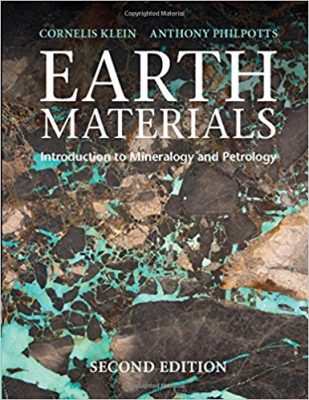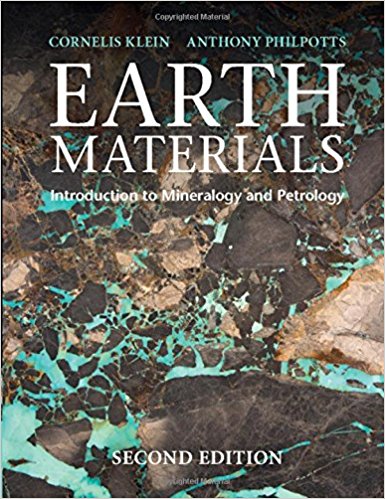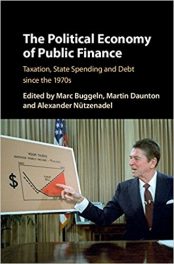 Authors: Cornelis Klein and Anthony Philpotts
Authors: Cornelis Klein and Anthony Philpotts
Publisher: Cambridge University Press – 594 pages
Book Review by: Sonu Chandiram
This textbook has been developed for use in a single-semester undergraduate course that is typically entitled Earth Materials at universities. It provides a single source of information that was previously provided in separate courses on mineralogy, optical mineralogy, and petrology, and in some instances, two separate single-semester courses on mineralogy and petrology.
This best-selling and practical book is a creative, smart response to the numerous curriculum changes over the last two decades, as its authors Cornelis Klein and Anthony Philpotts point out in their Preface to this second edition published in 2017. This is an important, valuable update (see below the list of its major features and changes) to the first edition released in 2017.
This large-sized (11”x 9”) textbook presents to us a concise coverage of the most fundamental concepts in mineralogy and petrology. This magnificent work also provides to us extraordinarily colorful views of a huge number and variety of rocks, materials and minerals, including rarely-seen gems. This thoughtfully-organized and well-written book also presents to us an integrated understanding of our planet Earth and the environment that surrounds us.
We list below the titles of the book’s chapters to give you an overview of its coverage:
- Introduction
- Materials of the Solid Earth
- How Are Minerals Identified?
- Fundamentals of Crystal Structures
- Introduction to Crystallography
- Minerals and Rocks Observed under the Polarizing Optical Microscope
- Igneous Rock-forming Minerals
- Direction and Rate of Natural Processes: Introduction to Thermodynamics and Kinetics
- How do Igneous Rocks Form?
- Igneous Rocks: Their Mode of Occurrence, Classification, and Plate Tectonic Setting
- Sedimentary Rock-forming Minerals and Materials
- Formation, Transport, and Lithification of Sediment
- Sedimentary Rock Classification, Occurrence, and Plate Tectonic Significance
- Metamorphic Rock-forming Minerals
- Metamorphic Rocks
- Some Economic Minerals, Mainly from Veins and Pegmatites
- Some Selected Earth Materials Resources
- Earth Materials and Human Health
Additional resources can be found online at: www.Cambridge.Org/EarthMaterials2, including:
- Over 100 rotatable #-D crystal structures in CrystalViewer
- PowerPoint slides and JPEGs of all figures from this book, for instructors
- Solutions to end-of-chapter questions, for instructors
An important plus for this book is that all the chapters in it follow a systematic outline in the presentation of materials. The text and images are laid out well, and demonstrate good ability of the editors and layout artists to achieve balance and symmetry, that are very pleasing to the reader. The materials-presentation outline typically includes these components under headings, and they are usually in this step-by-step order:
- Chapter Title
- Introduction to topics covered in that chapter
- Topics, sometimes in the form of a question
- Subtopics, sometimes in the form of a question
- Summary
- Review Questions
- Online Resources
- Further Reading
Among the major features of this textbook are the following:
- Close integration of clear illustrations with engaging text, creating an effective learning experience
- Stunning full-color photos of a variety of materials, and minerals with new descriptions
- Mineral specimens and rock-thin sections with excellent images to help students build a core understanding
- Online visualization of crystal structures through the CrystalViewer’s 3-D software
- A new section on hydraulic fracking and discussion of some of its most serious potential environmental consequences
- A completely new chapter providing an elementary introduction to thermodynamics, kinetics, radioactive decay, and absolute dating
In summary, this is an outstanding book, with extensive coverage of the most important aspects of mineralogy and petrology presented in a focused and concentrated manner, and it is amply and remarkably well illustrated.
Authors:
Cornelis Klein is Emeritus Professor at the University of New Mexico.
Anthony Philpotts is Emeritus Professor at the University of Connecticut.






